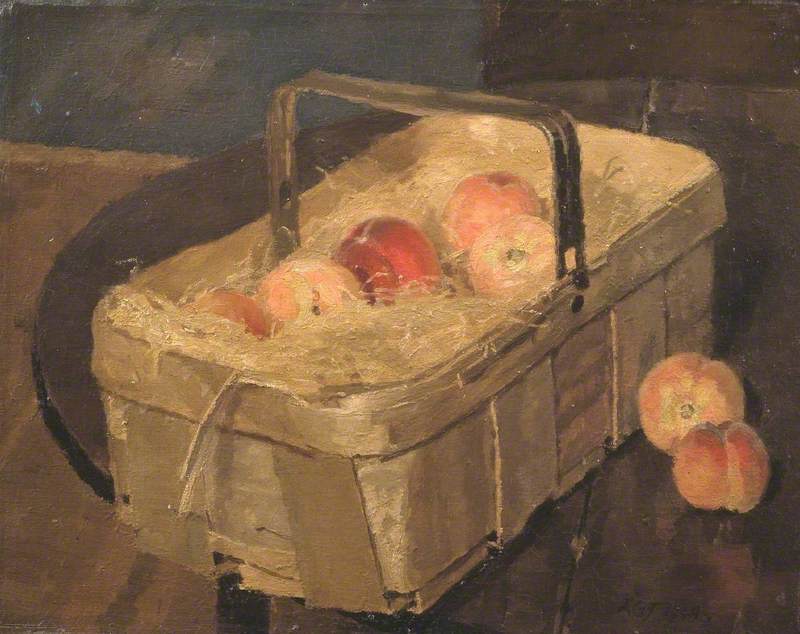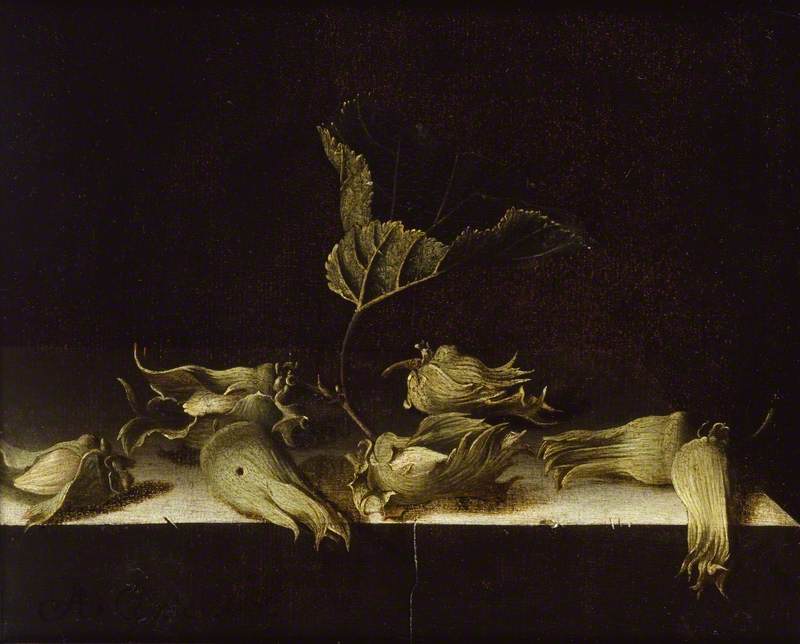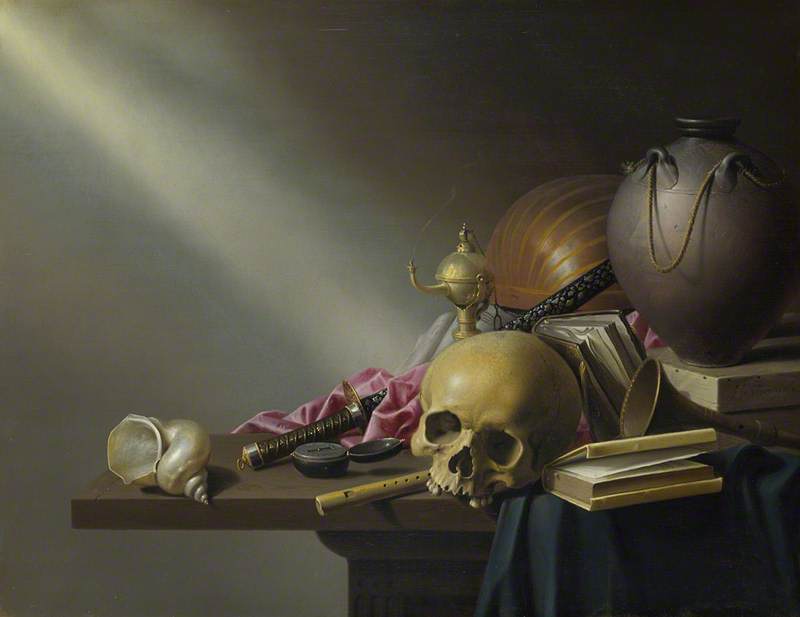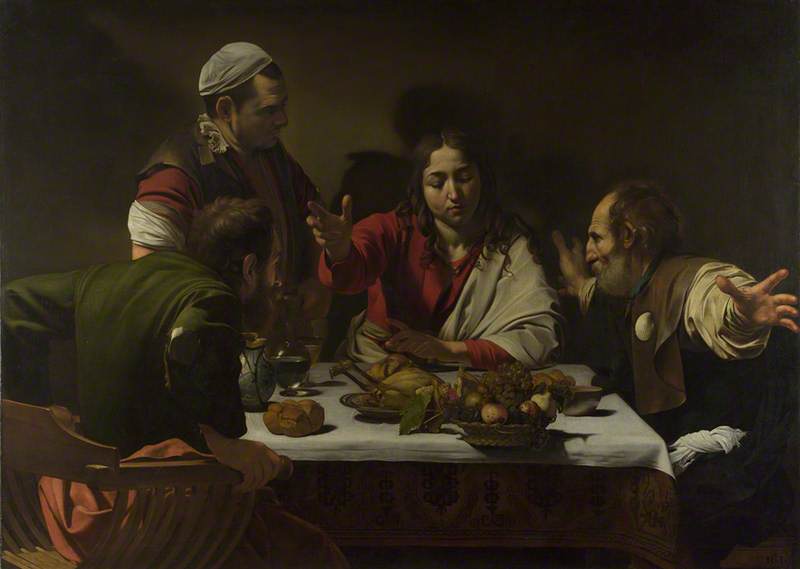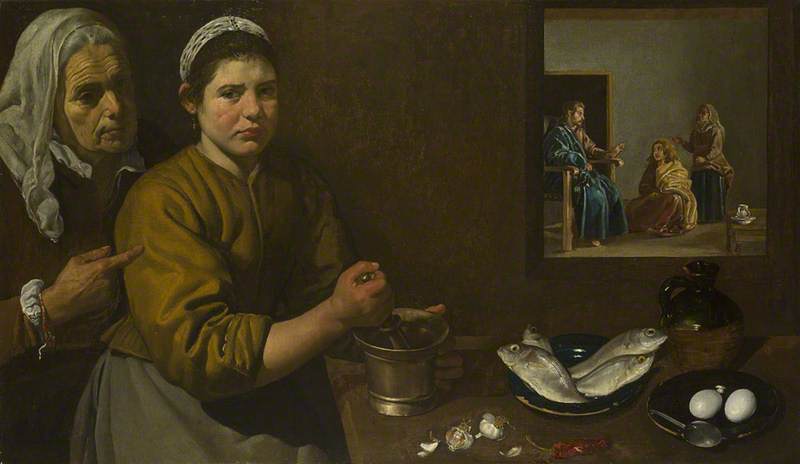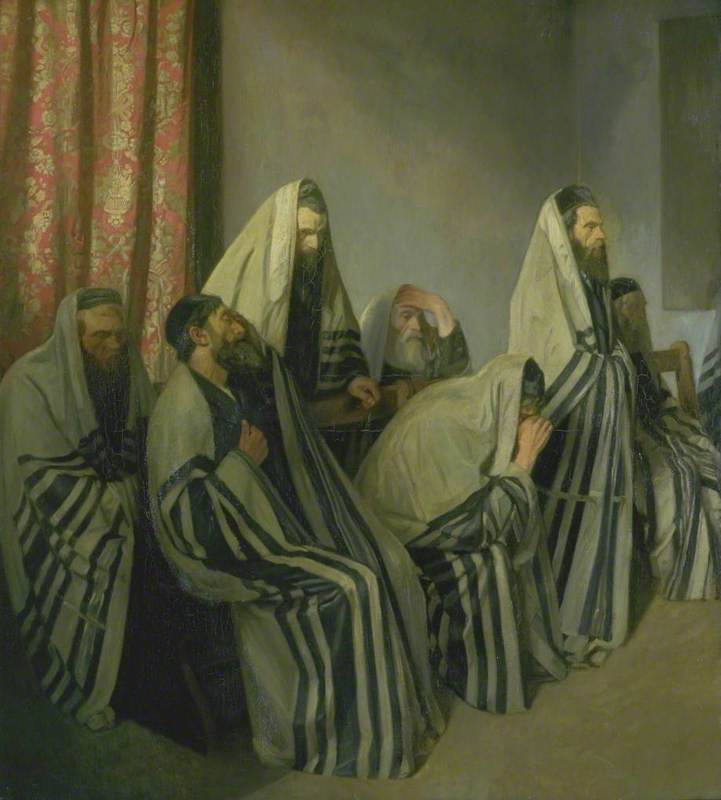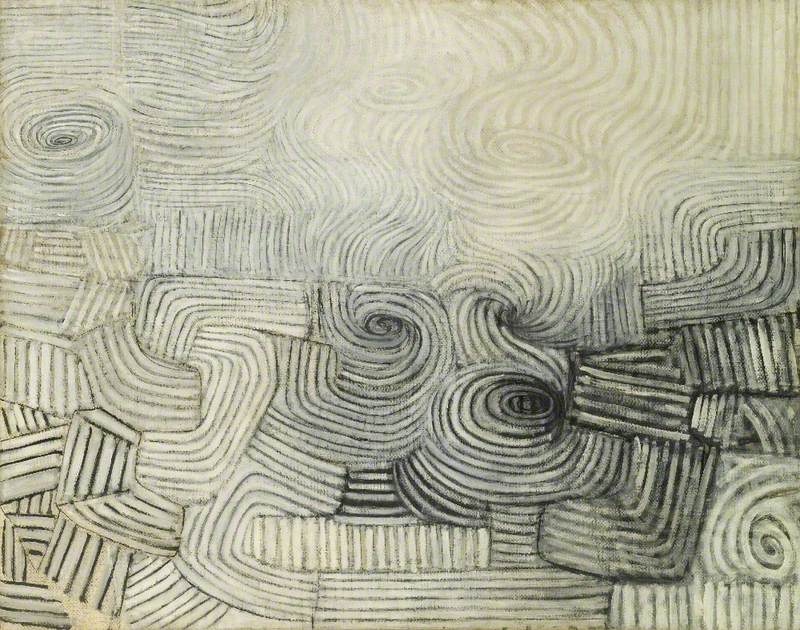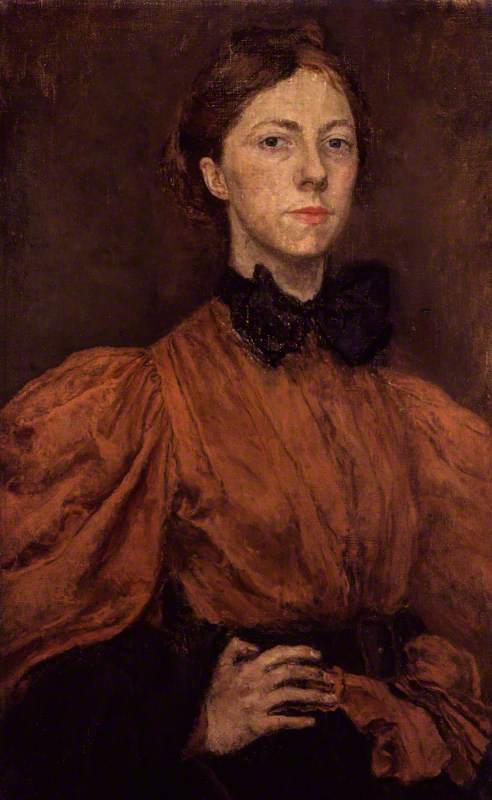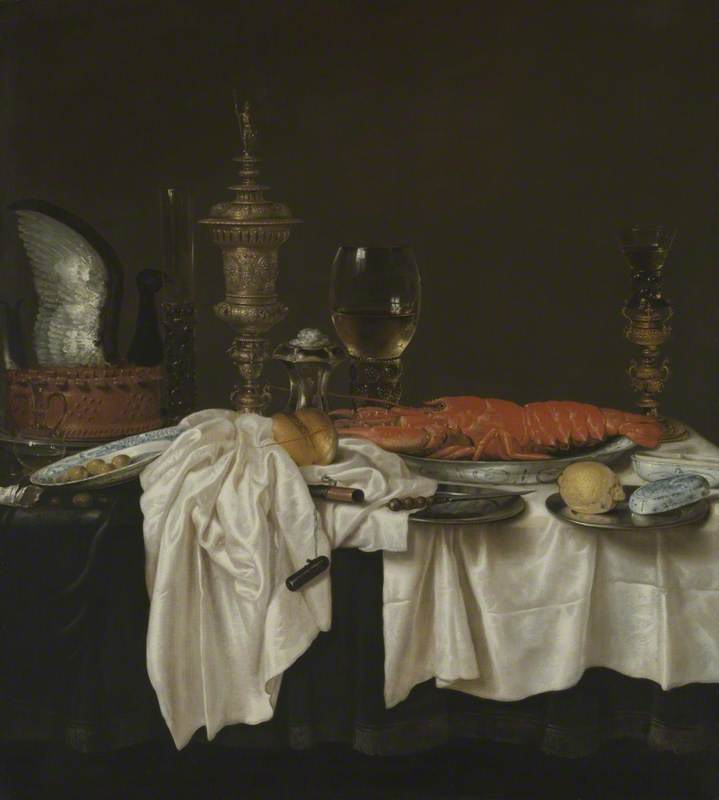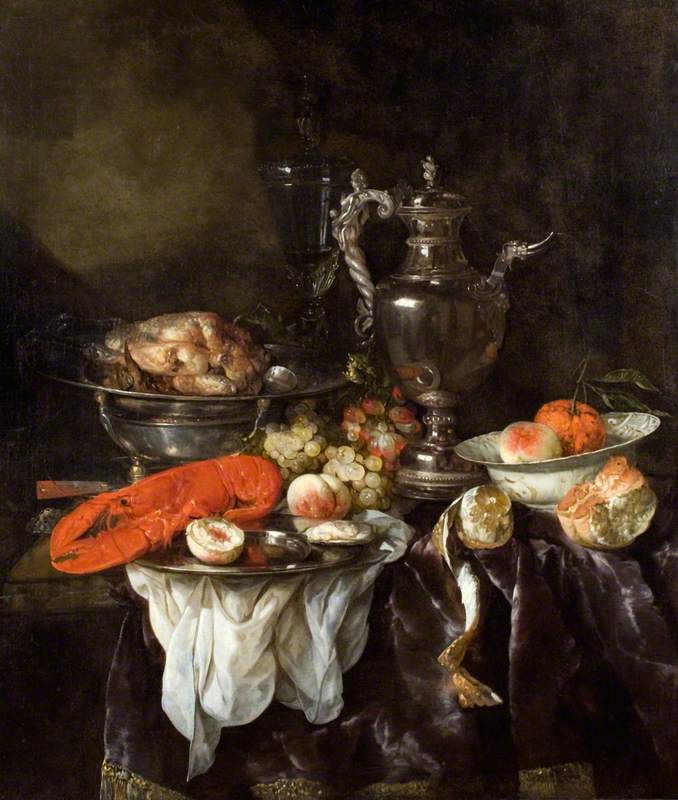When I was a medical student in the early 1960s I lived in a basement flat with four others off the Fulham Road in London. There were museum charges at that time, but the Tate, I seem to remember, was free on Sundays. So we used to go and I was particularly taken with a painting called Peaches in a Basket by Allan Gwynne-Jones.
It may have been one of the first paintings which, for some reason, I looked at carefully. It’s quite small (34.3 x 43.2 cm). The basket seems to have been carefully placed near the edge of the table. The squared shapes of the floor below are a little difficult to read. Bits of the straw and basket towards the front are particularly bright and vibrant. The two peaches separately on the table beside the basket are clearly important to the composition.
It was in a small relatively dark room towards the front of the gallery. Also in the same room were Mrs Mounter and her tea pot, by Harold Gilman, a painting of Leeds Market by Charles Ginner, an interior by Edward le Bas and a nude by Victor Pasmore. For a time I visited that room regularly.
In the general paper which I had taken to get into University there had been a compulsory question about whether knowing the details of an artist’s life contributed to the enjoyment that one got from looking at his/her works. I, of course, wrote that it did usually but to a different extent with different artists and different works.
During my first few years as a junior doctor, I got to know Gwynne and to learn much about his life.
He was born in 1892 and went to school at Bedale’s in Kent. When his parents separated in 1912 he lived with his mother in a small flat above the painter Randolph Schwabe at 43a Cheyne Row in Chelsea. He trained as a lawyer but spent some of the Summer Term of 1914 at The Slade School of Fine Art. Amongst the painters that Schwabe introduced him to was Augustus John.
He was painting in Cornwall when the First World War broke out. He joined the East Surrey Regiment and won the DSO during the Battle of the Somme in 1916. There is a reference to his citation in the issue of the Edinburgh Gazette of October 23rd 1916, which describes how he '...rallied troops of two companies who had lost their officers and gained a foothold in the enemy’s position'.
He continued to paint during the war, and decorated a few objects including a mirror for Schwabe’s wife Gwendolen, who was always known as 'Birdie', of whom Gwynne was a great admirer. After the war he returned to his studies at the Slade. Birdie contributed illustrated manuscripts and miniatures for which Gwynne did the lettering to an Exhibition at the 21 Gallery in 1919.
Will Rothenstein asked him to become Professor of Painting at The Royal College of Art in 1923 it seems on the strength of some student works of Gwynne’s which he had seen in an exhibition. Schwabe assisted him in drawing classes when he started, and Edward Le Bas was an early student.
There used also to be in the Tate a rather anxious looking self portrait with a hat and a large overcoat with a turned up collar from about 1926 in a room a bit behind the one containing Peaches in a Basket.
Schwabe subsequently became Professor of Painting at The Slade in 1930 and Gwynne joined him on the staff where he taught until 1959.
Gwynne married one of his students, Rosemary (Rosie) Allan in 1937. Just before the Second World War, Gwynne and Rosie were staying in Provence, and Augustus John and Dorelia were in the same place. As also was Andre Derain. It seems that they all got on well together. Gwynne was not a particular admirer of John’s work. He had taken over from him as a Trustee of the Tate Gallery in April 1939. John incidentally recorded that Derain was 'not a good natural draughtsman'.
Schwabe arranged for the Slade to move to join the Ruskin School in Oxford at the beginning of the war. Gwynne and Rosie rode around the surrounding countryside on early designs of mopeds and settled in Eastleach Turville in Gloucestershire in 1940.
The peaches in the basket were a gift when their daughter Emily was born. Schwabe recorded in his diary on July 7th 1948 'The Gwynne-Jones’ baby girl was born 8½ lbs. All has gone extremely well with Rosemary'.
The painting was bought for the Tate Gallery for £35 by the trustees of the Chantrey Bequest in 1954. I saw it again in an exhibition curated by David Brown in 1982, shortly before Gwynne’s death, aged 90.
On seeing it again the feeling of those Sunday mornings in the mid-1960s and that small rather dark room at the Tate came back to me.
